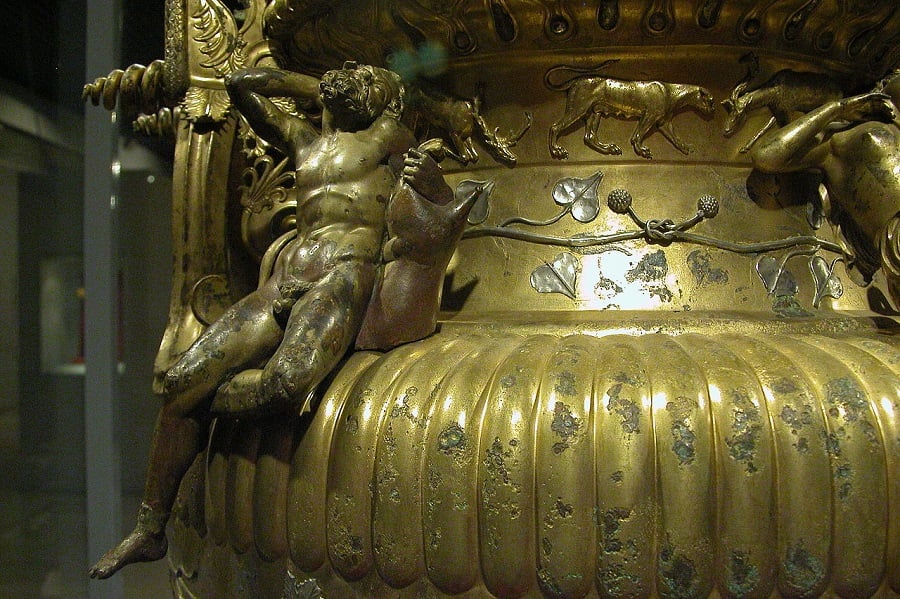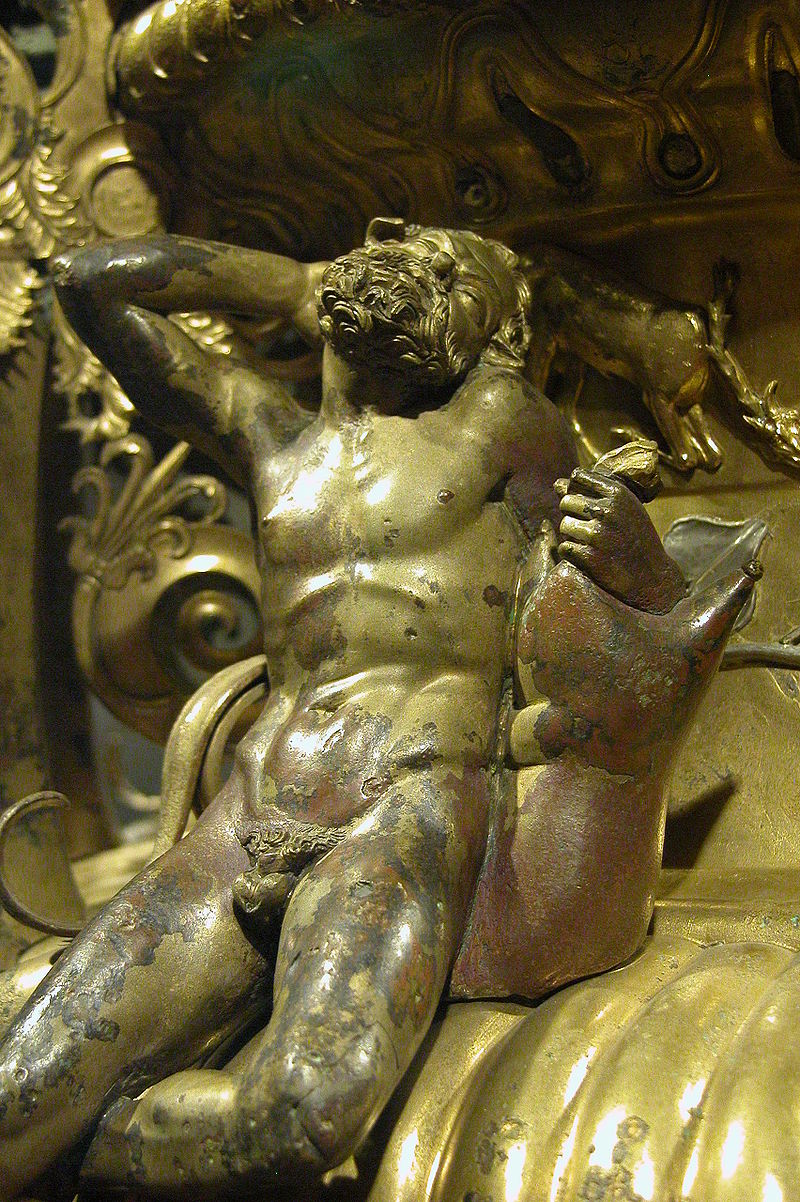Derveni Krater: A Masterpiece of Metalwork in Ancient Greece - GreekReporter.com (original) (raw)

A detail of the vase. Credit: CC BY-SA 2.5/Wikipedia
The Derveni Krater exhibited at the Archeological Museum of Thessaloniki is one of the most elaborate metal vessels from ancient Greece yet discovered.
Found in 1962 in an undisturbed Macedonian tomb of the late 4th century B.C. at Derveni not far from Thessaloniki, the krater is a tour de force of highly sophisticated methods of bronze working.
Weighing 40 kg, it was made of bronze with a high tin content (of 15 percent), which endows it with a superb golden sheen without the use of any gold at all.

The elaborate vase. Credit: Michael Greenhalgh, CC BY-SA 2.5/Wikipedia
Large bronze vessels with figural registers in relief, such as the Derveni krater, were extremely rare in ancient Greece.
The most significant reason for this may not have been technical since large pieces of armor were decorated using precisely the same techniques at the same time. Rather, this rarity may reflect the high cost of labor-intensive work, says Jasper Gaunt of the Emory University in Atlanta.
It is most unusual to find much figural decoration on the bodies of substantial Greek bronze vessels of the Archaic and Classical periods.
“The figural decoration on the body of the Derveni krater was well outside the usual canon even at the time of manufacture, far removed from the generally austere appearance of Archaic and Classical bronze vessels,” Gaunt says.
The Derveni Krater was a funerary urn for ancient Greek aristocrat
The krater was discovered buried, as a funerary urn for a Thessalian aristocrat whose name is engraved on the vase: Astiouneios, son of Anaxagoras, from Larissa.
The funerary inscription on the krater reads: ΑΣΤΙΟΥΝΕΙΟΣ ΑΝΑΞΑΓΟΡΑΙΟΙ ΕΣ ΛΑΡΙΣΑΣ, meaning: “Astiouneios, son of Anaxagoras, from Larisa.”
Kraters (mixing bowls) were vessels used for mixing undiluted wine with water and most likely various spices, as well. The drink was then ladled out to fellow banqueters at ritual or festive celebrations.
When excavated, the Derveni krater contained burnt bones that belonged to a man aged 35 to 50 and to a younger woman.

A detail in the vase. Credit: CC BY-SA 2.5, Wikipedia
The exact date and place of making are disputed. Most believe it was made around 370 BC in Athens. Based on the dialectal forms used in the inscription, some commentators think it was fabricated in Thessaly at the time of the revolt of the Aleuadae, around 350 BC.
Others date it between 330 and 320 BC and credit it to bronzesmiths of the royal court of Alexander the Great.
The vase is composed of two leaves of metal which were hammered and then joined although the handles and the volutes (scrolls) were cast and attached. The main alloy used gives it its golden color, but at various points, the decoration is worked with different metals as overlays or inlays of silver, copper, bronze, and other base metals.
Snakes with copper and silver inlaid stripes frame the rising handles, wrapping their bodies around masks of underworld deities. On the shoulder sit four cast bronze figures: on one side a youthful Dionysos with an exhausted maenad and a sleeping Silenos and a maenad handling a snake on the other.
In the major repoussé frieze on the body, a bearded hunter is associated with Dionysian figures.
Beryl Barr-Sharrar, Professor of Fine Arts at the Institute of Fine Arts, NYU, recently wrote a book about Derveni Krater. The artifact is placed in its Macedonian archaeological context and within the context of art history as a highly elaborated, early-4th-century version of a metal type known in Athens by about 470 B.C.
David Mitten of Harvard University said that her book “elevates this masterpiece of later classical Greek art to a status alongside those of the Mausoleum at Halicarnassus and the Alexander Sarcophagus as the most important monuments of Greek art in the fourth century B.C.”